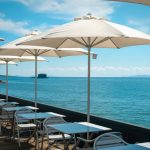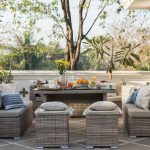


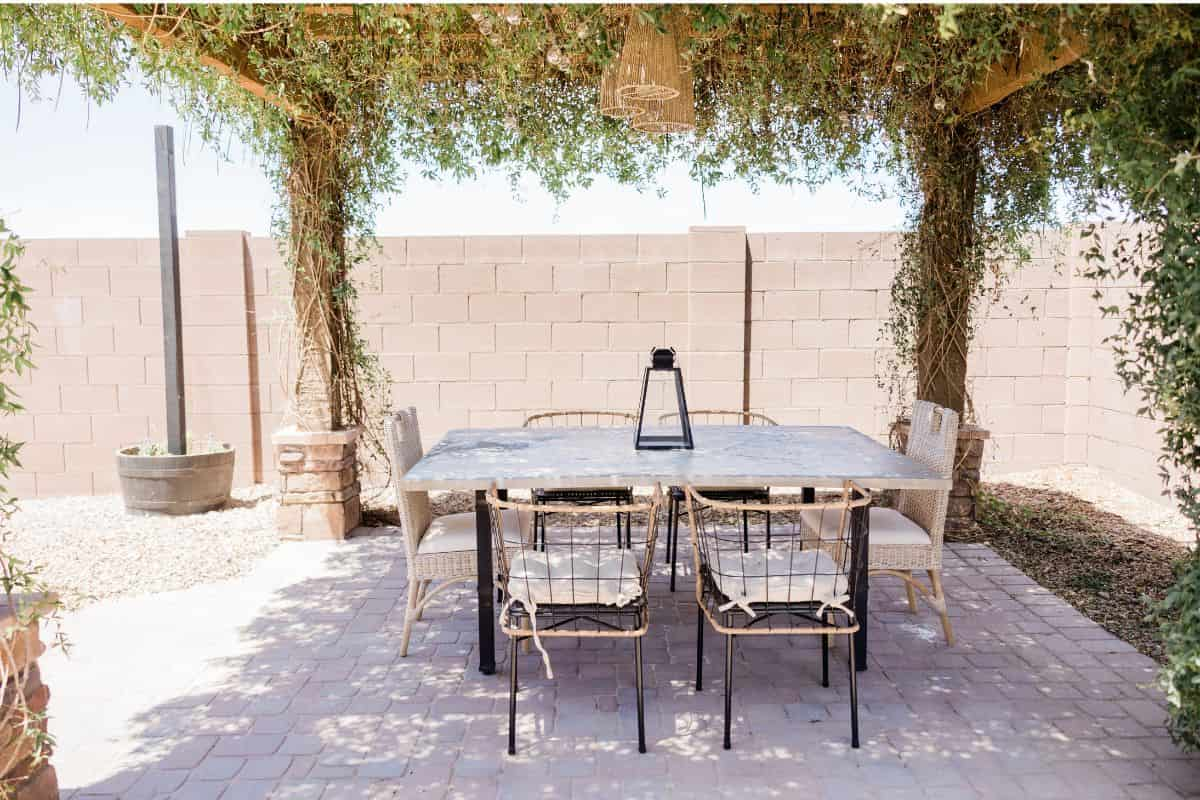
An outdoor table is not just a piece of furniture, it is also the centre of breakfasts in the sun, summer dinners with friends and family game afternoons. It is the star of the garden, the meeting point around which the best memories are made.
That’s why it’s important to choose the right outdoor table, because not all of them withstand the passage of time, rain, sun or wind equally well. The material it is made of will determine not only its durability, but also its style, maintenance and comfort.
Are you looking for a table that is hard-wearing and easy to clean, or do you prefer a natural finish that adds warmth? Knowing what material outdoor tables are made of is the first step to making the most of your terrace, garden or balcony.
In this post, we tell you which is the best material for an outdoor table, explaining the different characteristics of each one and how they resist weather conditions and the passage of time.
Tabla de contenidos
ToggleChoosing a good material for outdoor tables is essential, as they will be constantly exposed to the elements such as sun, rain, wind, humidity and temperature changes. Unsuitable material can quickly deteriorate, warp, discolour or even break.
In addition, maintenance varies greatly from one material to another: while some are easily cleaned with a damp cloth, others require regular treatment and care.
On the other hand, the material of an outdoor table also influences the comfort and aesthetics of the furniture, as it will determine the style of your terrace or garden, from rustic to minimalist.
Finally, choosing the best material for outdoor tables can also represent a long-term saving, as a good initial investment avoids having to replace the furniture every few years.



If you are wondering what material is used to make outdoor tables, you should know that there are several options, each with different characteristics. Below, we are going to analyse them one by one so that you can choose the one that best suits your tastes and needs.
Let’s start with aluminium, a very popular outdoor table material thanks to its lightness, durability and resistance to corrosion. As a non-ferrous material, it does not rust, which makes it perfect for coastal or high humidity areas.
The lightness of this material for outdoor tables makes it easy to move the table from one place to another, which can be very practical if you need to change the layout frequently.
In addition, aluminium is very easy to clean and requires very little maintenance. This, together with its resistance to weather conditions, makes it one of the best materials for outdoor tables.
In terms of aesthetics, it usually fits well in modern and minimalist settings, but depending on what other materials you combine it with, as well as the decoration of your garden table, it can be adapted to different styles.
Another popular material for outdoor tables is synthetic rattan, which mimics the look of the natural material but with much greater strength and durability.
It is made from plastic resins, such as high-density polyethylene, so it is suitable for outdoor use even in extreme climates. Unlike natural rattan, it does not crack or deteriorate in humidity or sunlight, but stands up very well to outdoor conditions.
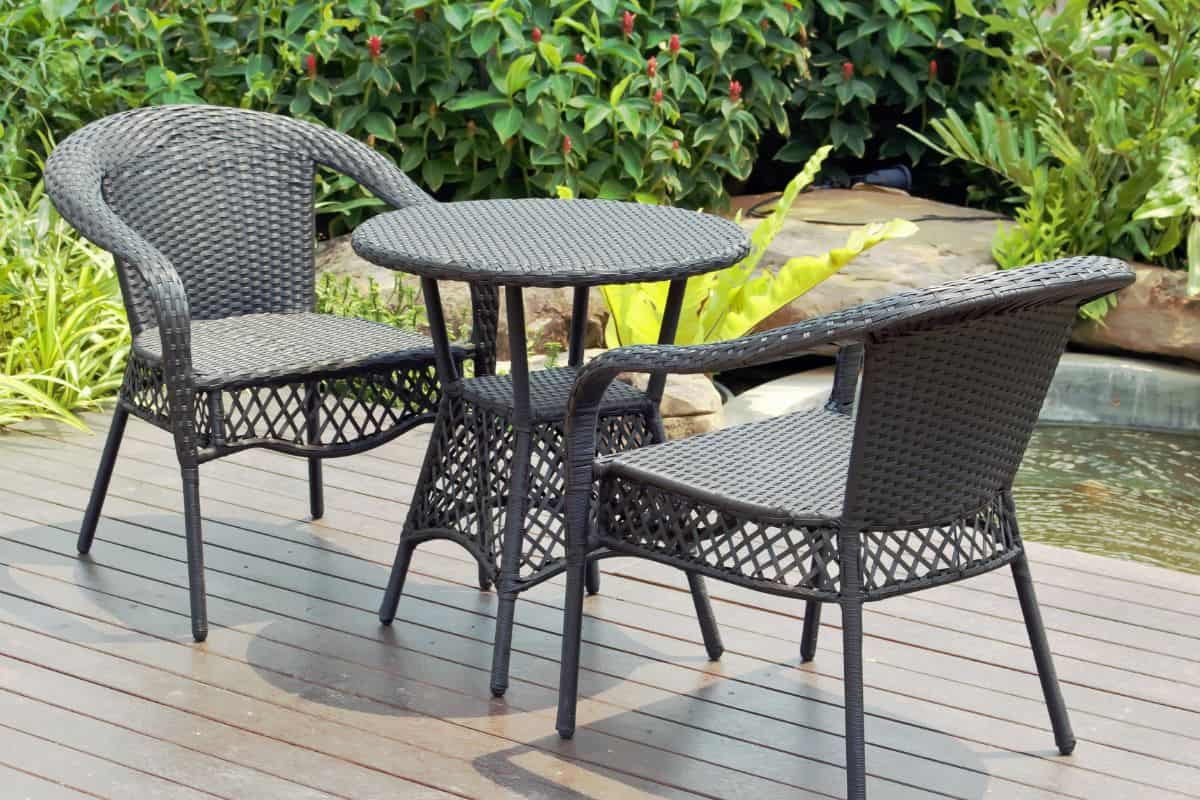
It is also cheaper than natural rattan and much easier to maintain. It is usually available in multiple colours and weaves, allowing it to be integrated into any type of garden.
Generally, synthetic rattan brings a cosy, natural and warm touch to any garden, and can be combined with other materials such as aluminium or glass. In fact, synthetic rattan is often used for the base and legs of the table and glass or crystal for the supporting surface.
Ceramic, on the other hand, has established itself as a great material for an outdoor table, thanks to its elegant aesthetics and high resistance. Normally, it is used as a surface on a metal structure, usually aluminium or other treated metals.
This material is resistant to sudden changes in temperature, exposure to the sun, humidity and stains. It does not discolour or burn with hot objects and is extremely easy to clean, as its surface is smooth and non-porous.
Although ceramic is a heavy material, this gives it greater stability, making it ideal for windy areas. In addition, it is often available in multiple finishes that can be adapted to a variety of styles.
It does cost a little more than other materials, but the result is an elegant, durable and low-maintenance table that is ideal if you are looking for an original design with good resistance.
We move on to glass or crystal, materials that bring visual lightness and a modern style to any outdoor space. As in the previous case, it is often used as a table top, usually on aluminium or rattan structures.
This material can be found in different types, such as tempered, laminated or treated for greater resistance. However, tempered glass is the most commonly used because it withstands moderate shocks, heat and cold without breaking easily.
Although it is more delicate than other materials, its great advantage is still the aesthetic aspect, since it creates a feeling of spaciousness that few other materials achieve and combines well with almost all styles.
It is also easy to clean, although it tends to be marked by fingerprints and dust, so it requires frequent reworking. However, it does not rust, does not crack over time and stands up well to rain and humidity, although it should be protected during particularly heavy storms.
Plastic is a very practical and economical outdoor material for tables. Its light weight makes it very easy to move, but it is also very easy to clean and maintain.
Also, plastic does not deform with humidity and withstands the sun well, as long as it is of good quality. In this sense, it is preferable to opt for plastics such as polypropylene, like the ones we offer at Home Zentrum, which resist heat very well, given that other cheaper models may discolour or break over time.
Its low cost makes it an ideal option for those looking for functionality without making a large outlay, being available in an infinite number of colours, shapes and sizes, which allows it to adapt to any type of garden or terrace.
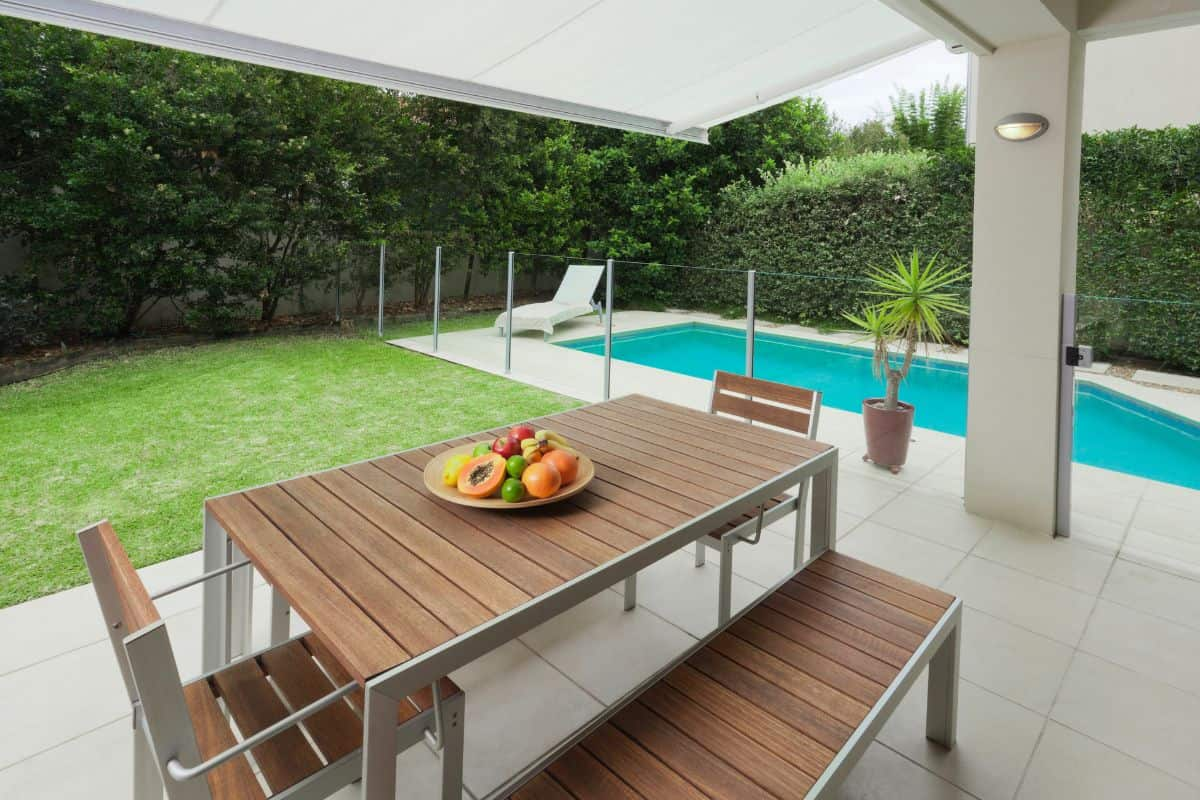
Finally, we will talk about treated wood, a material for an outdoor terrace table that offers a warm and natural look. The most common alternatives are oak, teak, acacia or pine, as they are more resistant to moisture and insects.
It is important to make sure that the wood is well treated to protect it from the weather, otherwise it can easily be damaged, especially by rain and humidity. In addition, despite the treatment, this material requires some maintenance, such as applying protective oil periodically.
Thus, treated wood is ideal for rustic gardens or terraces looking for a natural look, but it can warp or crack over time if not properly maintained.
If you still have doubts about which is the best material for outdoor tables and which one can best suit your preferences, do not hesitate to ask us for advice so that we can help you choose the best alternative for you.

